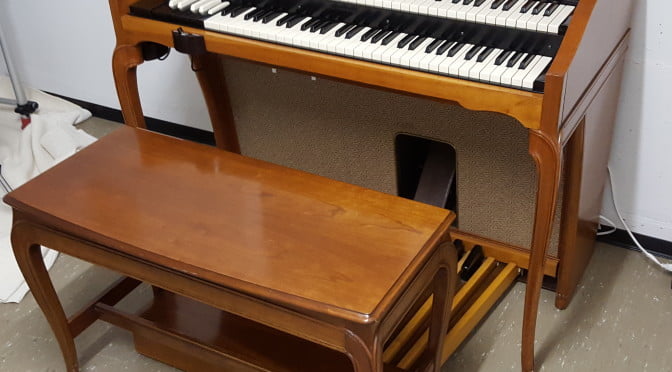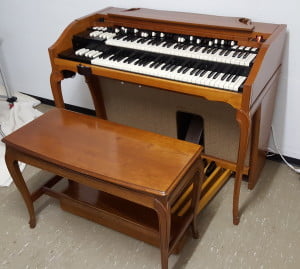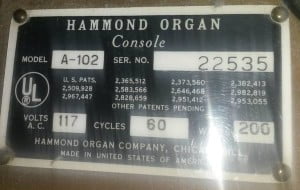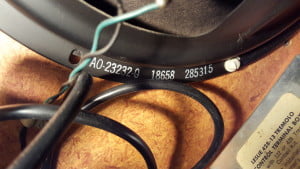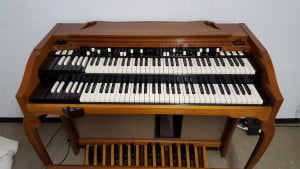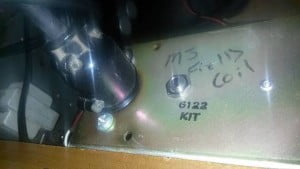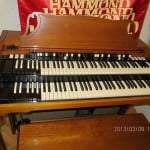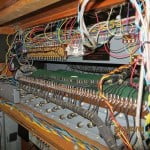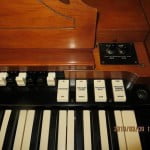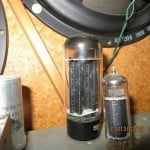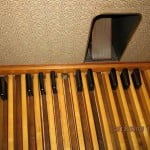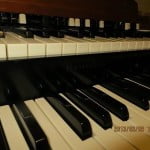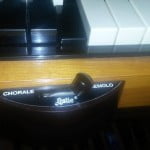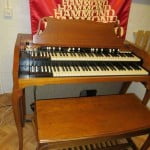A great site with a lot of information of the old tonewheel Hammond organs is Captain Foldback. More details on the A-100 can be found at A-100 – Best in its class
Overview
“The best B-3 is an A-100” – this is a statement occasionally found on the web. It seems to imply that a Hammond A-100 organ is really the same organ as the legendary B-3, with additional features added. The A-100 is often considered as the ‘home’ version of the B-3/C-3 tone wheel organs. The cabinets of the A-100 models were targeted for home use: no locking top, the addition of built-in speakers and reverb, and a wider selection of wood finishes and stylings. Today, the A-100 series organs have become increasingly sought after since they are usually well kept and less played than B/C-3 organs often owned by churches or professional musicians. The slimmer profile of the A-100 cabinet is often preferred over the B-style cabinet for taking it on the road, and makes it easier to get into a home by virtue of its smaller depth, which makes it easier to negotiate doors and corners.
History
The first A-100 organs were produced in in the USA in 1959. They used the necklace type reverb. The A-100 was the first tone wheel console to include a built-in reverb. In the early 60’s, different models of the A-100 featuring a different cabinet style were issued:
- Traditional A-100. Available in red mahogany and light walnut
- ‘Contemporary’ A-101. Available in grey and brown mahogany and translucent black
- French Provincial A-102. Available in dark and light cherry. Features curved front legs
- The C-3 cabinet was adapted to contain the A-100 speaker system, creating model A-105. Available in light oak and dark walnut. Has a back panel and a locking top
- The A-122 in Patina Walnut (from 1964). Available in aged walnut. A slightly modified version of the A-101
- The Early American A-143 (from 1964). Available in maple.
Leslie speakers were sold in matching colours and wood types, but not by the Hammond Company, they were sold directly by Don Leslie’s company, Electro Music.
The A-100 series was discontinued in 1965. The A-105 remained in production until the very last tonewheel organs were made in the mid 70’s. Since the A-105 was still around after 1965, the parts needed to make it , like the speakers, power amplifier and other core components were too, so A-100 series organs were being produced until 1975 in the U.K., Denmark, Belgium and Germany. The models produced under license in Europe were adapted to run using the locally prevalent 200V / 50Hz power supply.

